Bill Vogeney—or “Vog” as he’s known in enthusiast circles—is a long-time Scotty Cameron collector with an extensive collection of rare and hand-crafted putters from Scotty’s early career. From time to time, we will feature articles from Vog in this new series to provide context, history and interesting back-story to Scotty’s evolution as a putter maker.
Over two decades ago, someone first asked me this question: “Vog, what should I collect?” He had played several different Cameron putters with success and was interested in starting a collection. My response was “collect what you like.” If you were to ask me this question today, I’d give you the same answer!
My collection has a lot of different themes, something I hope to explore for you in the future, yet I have to say my favorite theme is putters with a different or unusual neck. With the release of Scotty’s new B3 line, you can see the evolution of the plumbing neck, the long neck and the flow neck on these newly-refined designs. Scotty has 35 years of experimenting with his necks; rightfully so, they’re an integral part of his putter designs.
If you take the time to develop an eye for his different necks and be patient, you can find and collect a number of different and experimental necks Scotty created over the years for the best players in the world-and the best collectors as well.
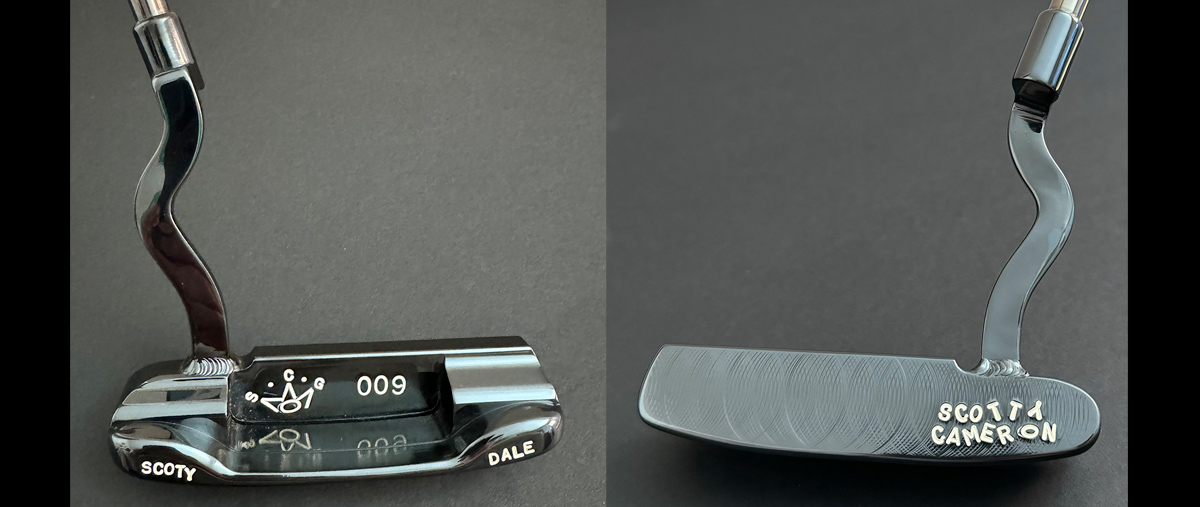
Above: Perhaps I’m biased, but I think the granddaddy of Scotty’s unusual, playable and collectable necks is the “Miss Lena Wayback.” I first saw one, a Scottsman 945 head, in a book on putters published in 1996 that featured some of Scotty’s early work. The profile of the neck is somewhat like a female 1950’s era television character—a very curvaceous one!
According to Scotty, he made perhaps a handful of prototypes in 1993 to show what he could do with different putter designs. For the better part of three decades, I’ve been searching for one of these prototypes. The Miss Lena pictured in that book was for sale on eBay two decades ago. One somehow made it to the PGA Tour and was used briefly by a past Open champion. One sits in a collection in the Northeast. One surfaced for sale in Japan almost 15 years ago. To my knowledge, that’s the extent of these 30-year old prototypes. Thankfully in 2006, Scotty revived the neck, making a precious few putters since then for various collector events or for serious collectors on special request. The best thing about this neck is that it’s totally functional—it looks just like a long plumbing/plumber's neck at address.
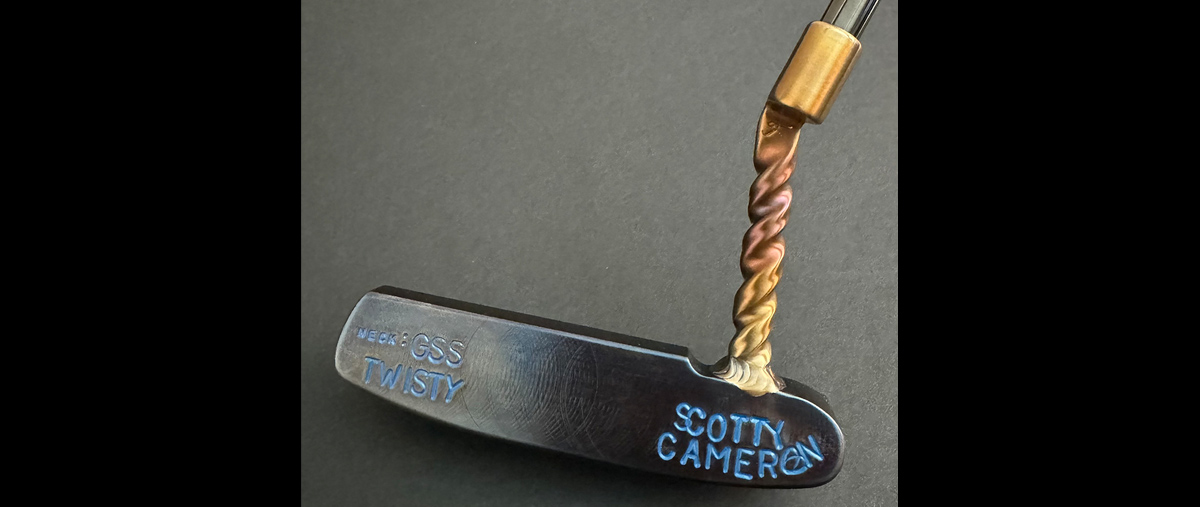
Above: The “Twisty” has almost the same mythical presence as the Miss Lena Wayback, yet is a little more attainable for the serious collector. The origin of the Twisty lies in Scotty’s Studio. Over the years, there have been countless visitors to see Scotty work his magic and learn more about their putting stroke. The Twisty started as a demonstration, and if the visitor was lucky, was also a gift. In a matter of 10 to 15 minutes, Scotty would start with a longneck, often a Newport or Newport 2 Teryllium, and heat and bend the neck back and forth to soften the metal, before he created the twists in the neck. I consider myself extremely lucky to have seen Scotty work his magic on a Twisty he crafted during my first visit to his original Putter Studio; one he made for David Levine, my co-author on our 2001 book on Scotty. The one shown above is my personal Twisty, with another twist: it has a GSS neck in Chromatic Bronze to complement the carbon steel head in Chromatic Blue.
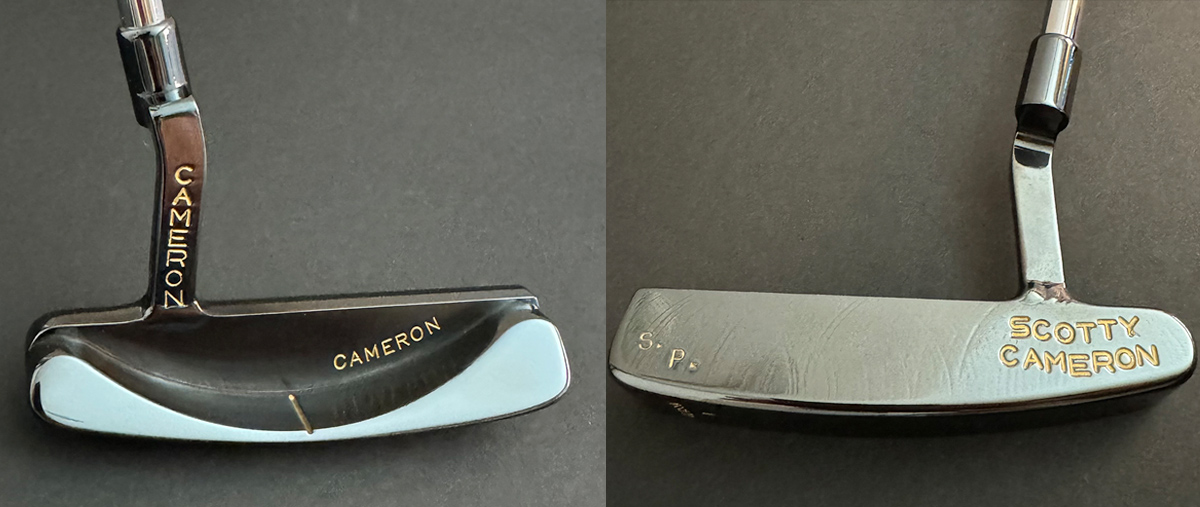
Above: For 30 years, I’ve continued to get excited when I get a chance to buy a welded neck putter. In 1992 and 1993, Scotty was still an unknown to most golfers in the U.S. I had been lucky enough to see his early work at the PGA Merchandise Show, which were either all made by hand “Scott” Cameron putters or his early production models marketed by another company prior to joining Titleist. They all had similar round flow necks, and the welds were all painstakingly finished so there were no signs of a weld. Then in 1994, I acquired an early Classic 2.5 with a welded neck, and my collecting fires heated up to a whole new level. The exposed weld has such a mechanical look to it; perhaps I was unduly influenced by my late father, who was a welder for 35 years.
From a practical standpoint, the welded neck is a necessity when a player wants a certain head shape but wants a different neck. Scotty’s early marketing emphasized his use of one-piece milled heads, yet it’s difficult and time consuming to make a one-off putter with a different neck using a one-piece milling made on a CNC (computer numerically controlled) milling machine. When one of the best players in the world wants a putter, they want it as soon as possible. Welded necks were and still are a necessity. The Classic 2.5 prototype putter shown above has a weld that appears to have been cleaned up at the back of the neck to make the look as clean as possible from address. A keen eye might also notice the “N” in Cameron on the back of the neck is very low on the neck, as the neck is just a touch shorter than a standard plumbing neck and was shortened from the base.
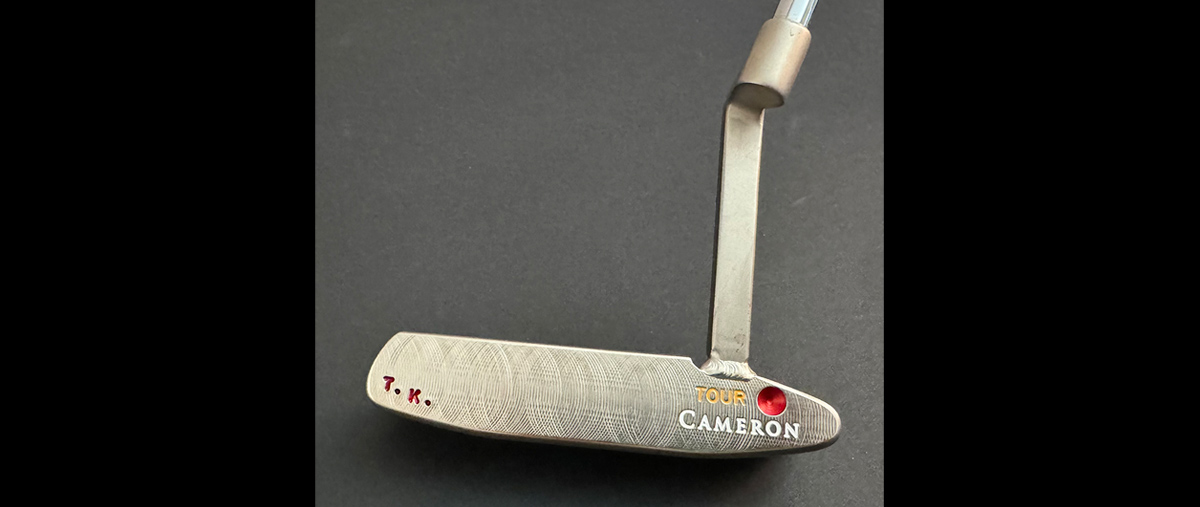
Above: Long plumbing necks, or just long necks, are hot again after being out of Scotty’s lineup for almost 25 years; his new B3 line features the Newport 2 Long Neck, one of which is currently in my bag! The putter shown above is a long neck Newport 2 from 2000-2001 made for a prior U.S. Open winner. Thankfully, if you’re looking to collect long necks, there are older OTR models including the Cameron CLN and the Newport and Newport 2 Terylliums from the late 1990s that can still be found in near mint condition with some patience. Long neck tour putters are very hard to find!
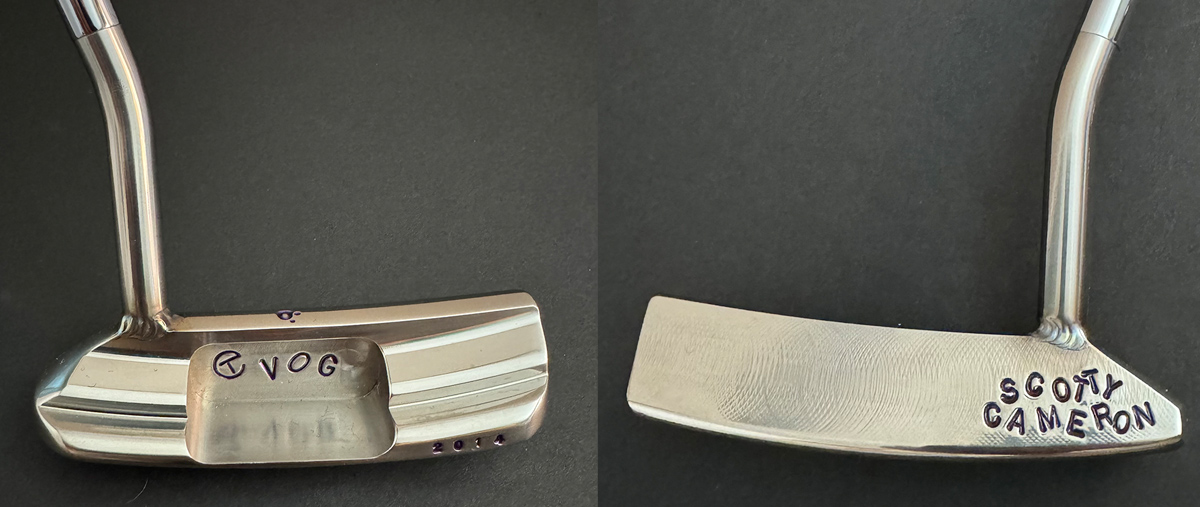
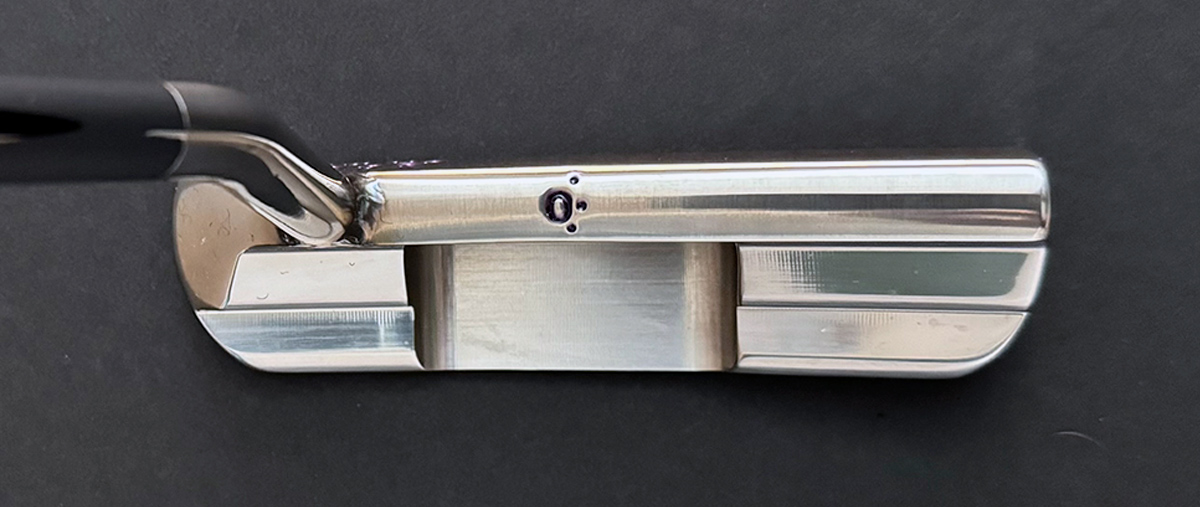
Above: As I discussed in my last feature on the Santa Fe, flow necks are typically ideal for the player who likes a softer look and has more release to their stroke. Scotty could do almost anything with a flow neck. He could make it shorter, longer, closer to the heel or even the center of the face, create more offset, etc. He could even make a round neck perform more like a plumber’s neck with less toe flow with the right length and bend. The putter above is a rare “Toolbox” I bought during my first visit to Scotty’s Encinitas Gallery in 2014. It’s longer than most round necks and is bent higher in the neck to create a totally different performance profile. Comparing the toe hang, it’s very similar to a Newport, yet the neck is smooth and flowing.
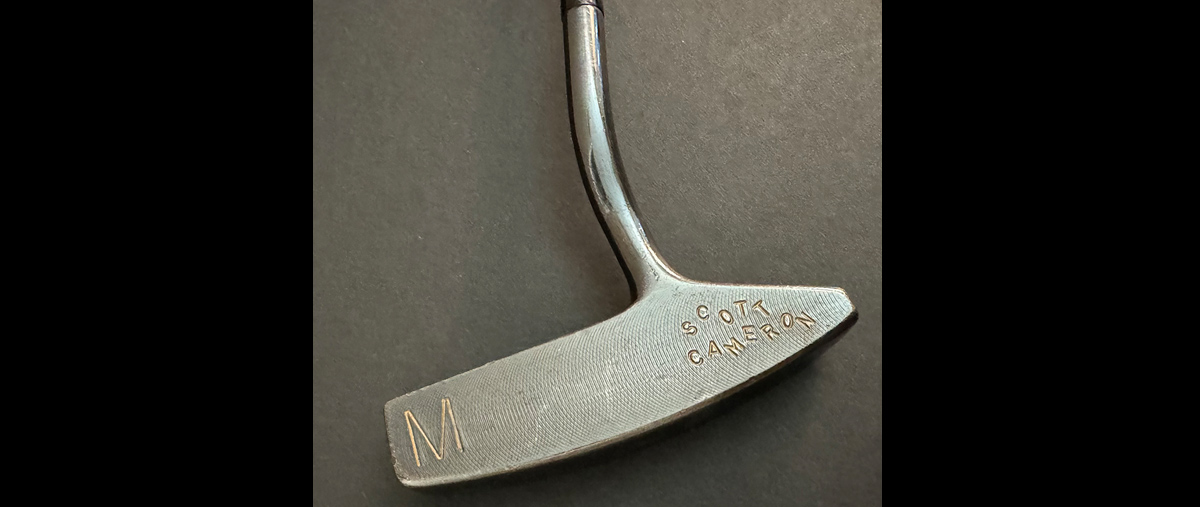
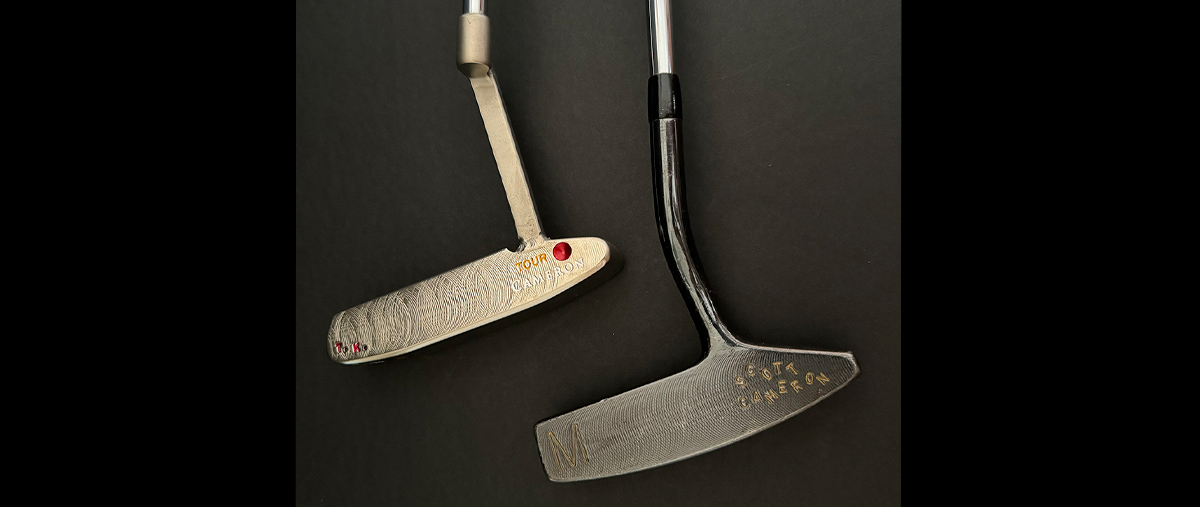
Above: Even I can be guilty of calling a putter a “one-of-a-kind” a little too often. This one I truly believe fits that description. An early Scott Cameron handmade for the tour, it has a long neck that has been referred to as a pipe neck. A pipe neck typically is a slightly thicker round neck and has no tapering in it. Not only is this a long neck, it has a lot of offset bent in as well. Compare this to the Newport 2 longneck I showed earlier; the necks are of identical length.
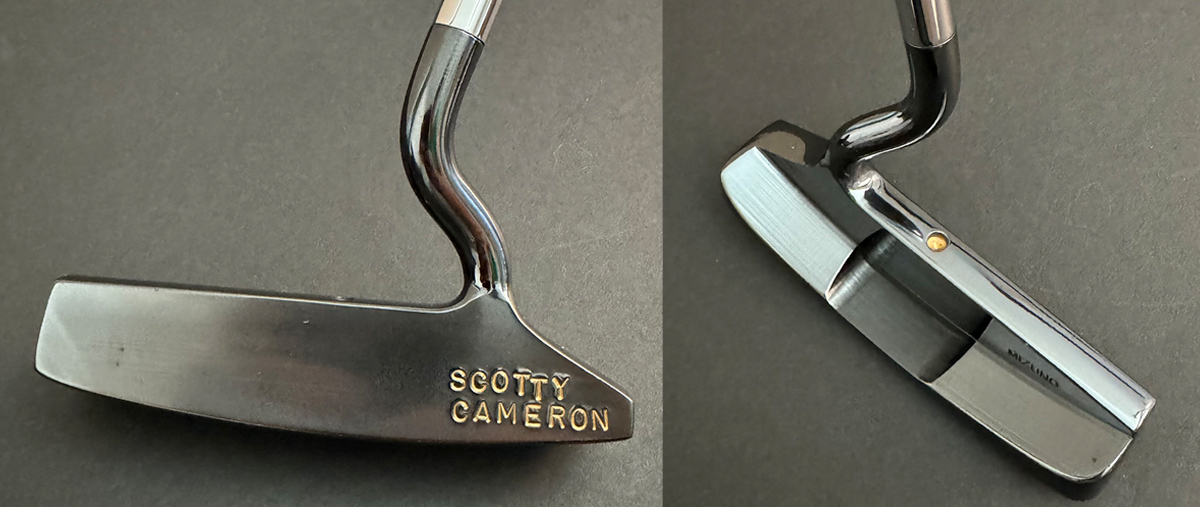
Above: Whether you call it a swan neck or a goose neck, arguably this is the most beautiful neck Scotty ever used on a putter. Sadly, it’s almost a thing of the past for reasons that the average Cameron fan might never guess—and even I’m guessing, because I’ve never specifically had a conversation with Scotty about the goose neck.
Collecting for 32 years, I can tell you I’ve seen countless more goose necks on older tour putters than I’ve seen on newer tour putters, as I alluded to above. Most of those early goose necks were on blade-style putters. Connecting some of the dots, these early putters were often used by more established (meaning older) tour players 25-30 years ago. They may have grown up playing classic blades, but as some of you know all too well, with age comes changes with the putting stroke. Strokes with a lot of arc, requiring the release of the putter, don’t work as well as we age. I theorize many of these early goose necks were made for players who still preferred the look of a blade, but needed a neck that wouldn’t have as much toe flow. Regardless, they’re a thing of beauty and can be a lot of fun to collect as well.
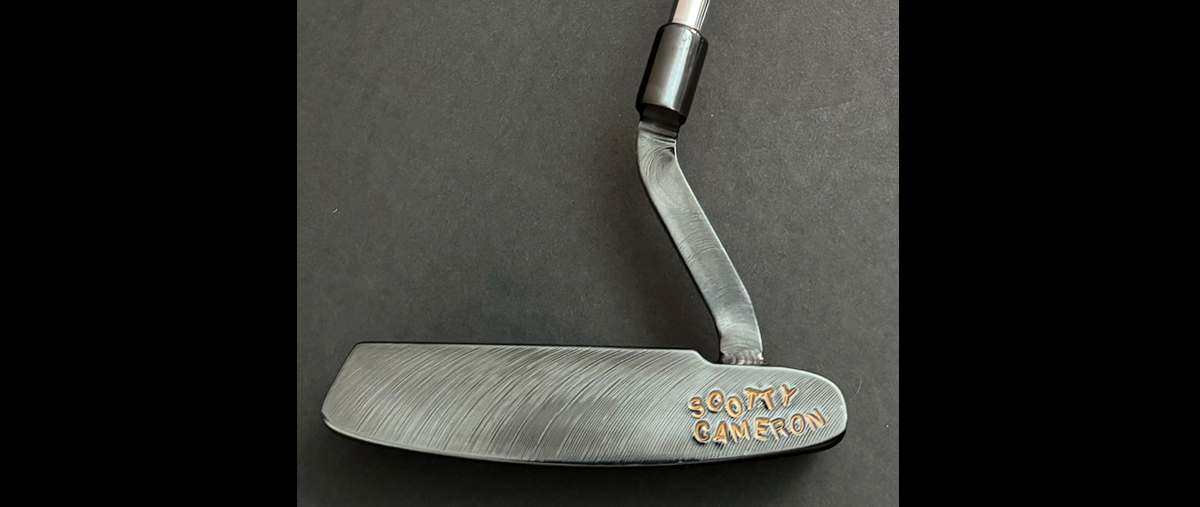
Above: The neck on this putter might be reminiscent of a Miss Lena, but it’s a bit different. Jokingly, I call this one “Miss Lena Forward” as the bend is towards the center of the blade instead of backward then forward on a Miss Lena Wayback. It’s an early, pre-Classic I prototype head from 1993, with a lot of other modifications clearly done specifically for the player. First, it’s 37 inches long and was made at a time when belly putters weren’t “a thing.” Close examination also shows the putter to have negative loft! The former tour player who this was made for was tall and played the ball slightly ahead of his front foot—he hit everything on the upswing, necessitating negative loft. Back to the neck, why that particular bend instead of a long plumber’s neck, both which could be almost perfectly face balanced? I have no idea, but I like it!
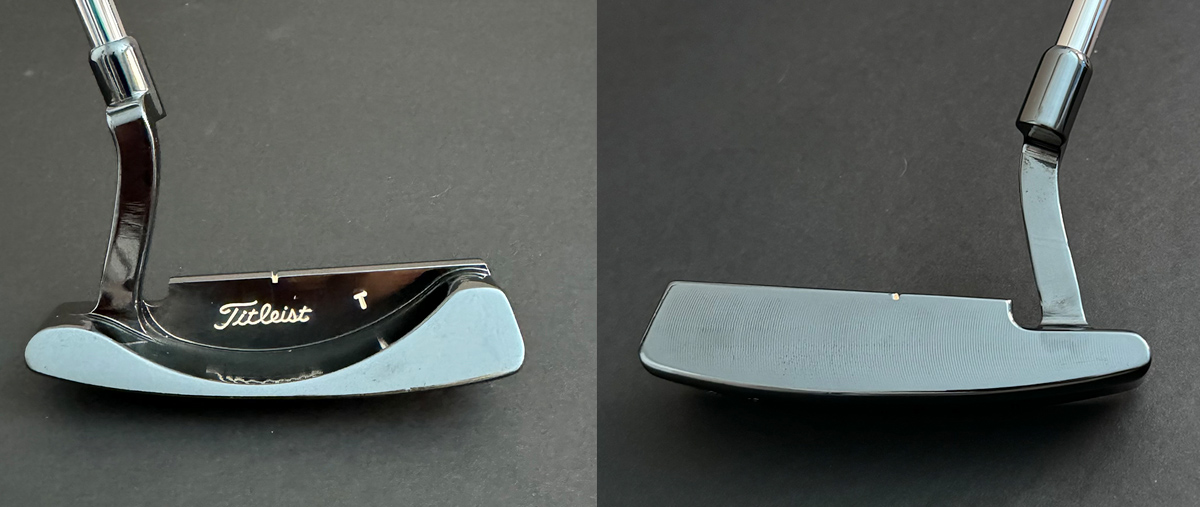
Above: Let’s call this a baby Miss Lena Forward! I’ve seen a handful of putters in the last three decades with this neck treatment—a standard length plumber’s neck with a bend toward the center of the face. This one has a little less toe hang than another “Faxday” head I have, so perhaps that was the intent for the bend.
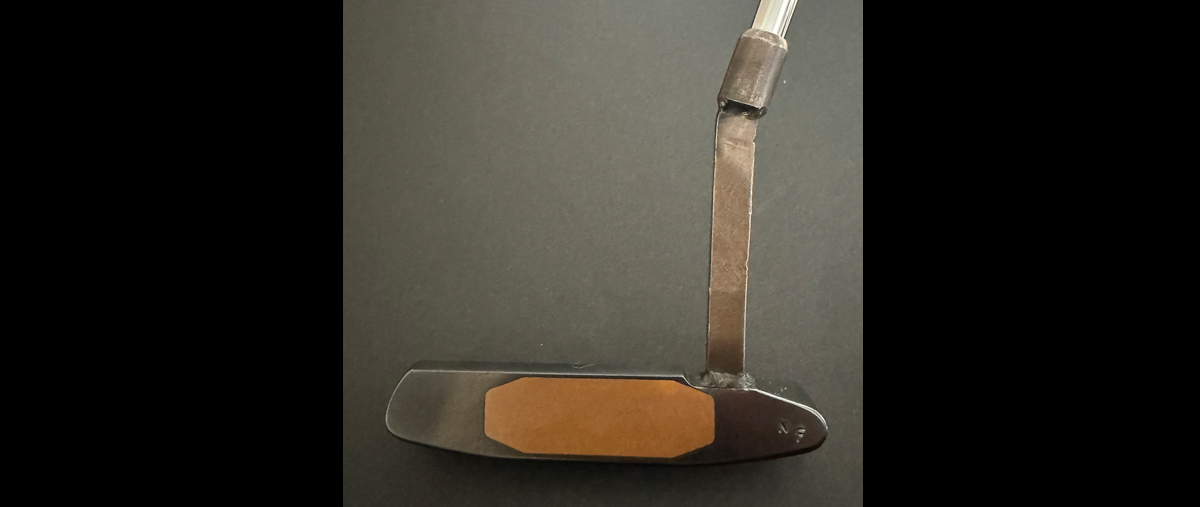
Above: Many Cameron fans are familiar with the slant neck that originated with the 1998 stainless Xperimental Prototype and continued with the Newport Pro Platinum slant neck in 1999-2000. This is a very early prototype—a double “weldy” slant neck! Scotty created this neck by taking a long plumber’s neck and welding it to the head. He then bent the neck at the base, cut off the top of the neck including the plumber’s bend, and then welded just the hosel cup to the top of the neck. Most if not all these hand-welded slant necks were made in 1996-1997, a time that Scotty was experimenting with lots of different necks and looks.
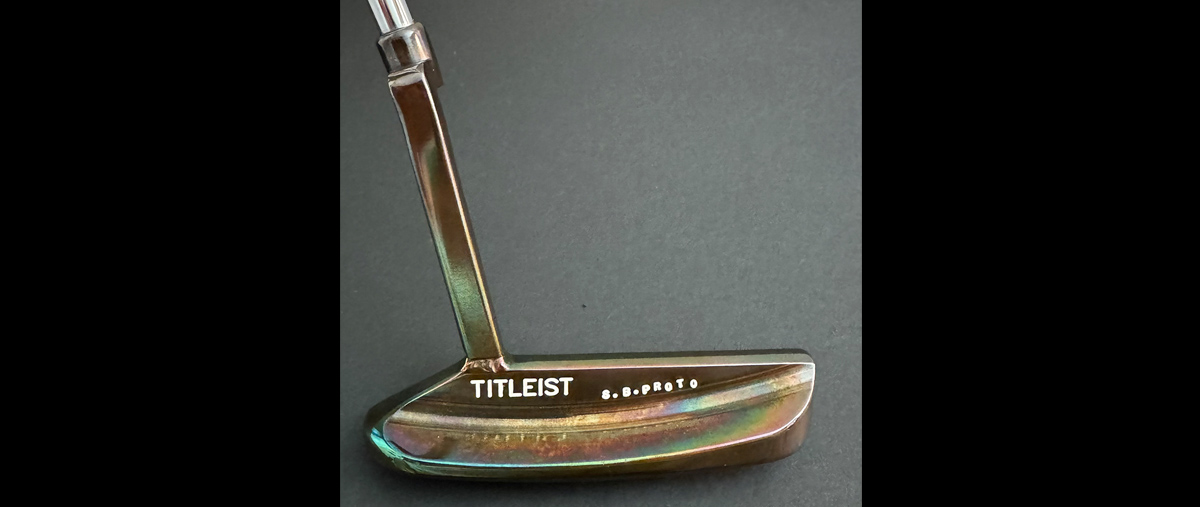
Above: “What is an S.B. proto?” That’s what I thought to myself when I saw this putter for the first time earlier this year. I think I’ve figured it out: S.B. means slant back. The neck clearly slants back toward the heel. The combination of the finish and the tour Coronado head tells me this was probably made in the 1997-1998 time frame; as previously mentioned the mid-late 90’s was a time of experimentation by Scotty, as I’ve seen more unusual necks made during that time than any period of his career.
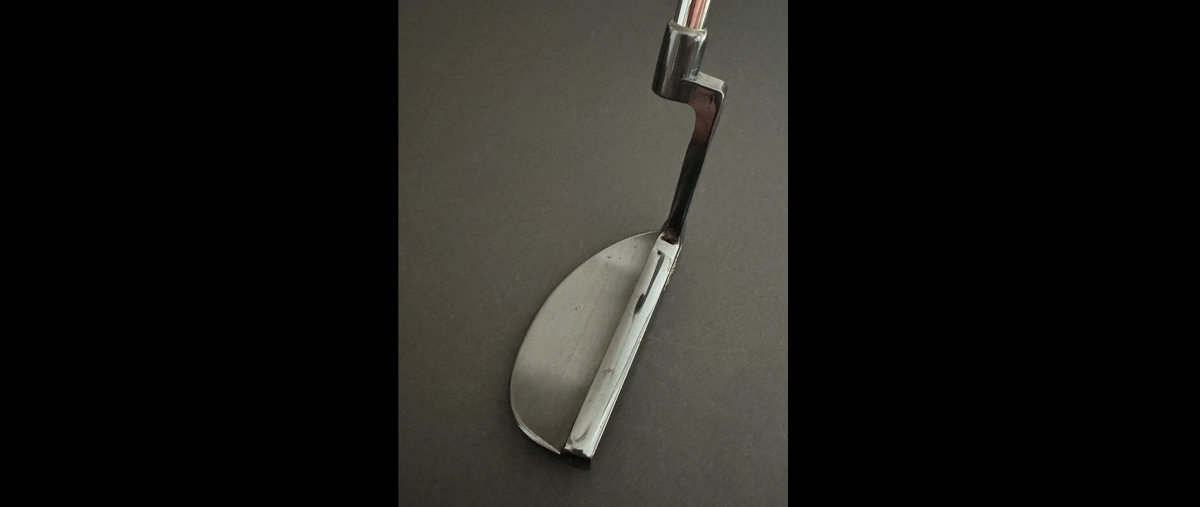
Above: Over the years I’ve seen tour putters that were quite unique, with modifications by Scotty to meet the desired specifications of demanding tour players. The neck on this early mallet design takes the cake. I’m not sure I’ve seen another putter with an onset neck, behind the leading edge. What was the player trying to do? Did they have a severe forward press, and this neutralized some of the effects? Did they have the yips? All I know is that when I had the opportunity to show this to Scotty two decades ago (it’s one of my infamous “ski bum” putters—a story I might retell in the future) he immediately remembered the putter and the player he made it for. Given the player, a multiple time winner on the PGA Tour and player on the PGA Tour Champions when this was made, I’m guessing the neck was to help with the yips. Curiously enough, I summoned up the courage to play 18 holes with this putter 15 years ago. While it certainly felt different (quite a bit!) the putter was amazing on left to right putts!
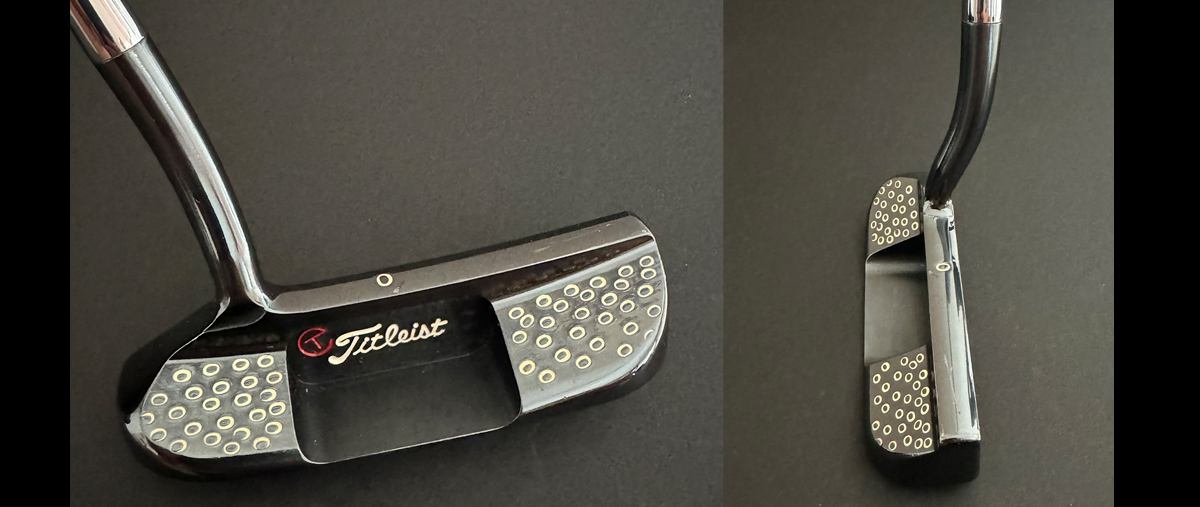
Above: The examples I’ve shown you previously are just a few of the Scotty Cameron putters I have with an unusual neck. Frankly, there are so many nuances to the neck of a Scotty Cameron putter that with a good eye, you can find many more variations that are more subtle. The putter shown above is a one of those subtle examples, a tour Studio 2.5, and it’s one of my favorites to look at. It’s difficult to show in pictures, but it’s a rare example of a round flow neck that has 1.5 shafts of offset. It just sits so perfectly!
If you’re in search of a theme for your collection, consider pursuing unusual necks like these. Enjoy the hunt!
